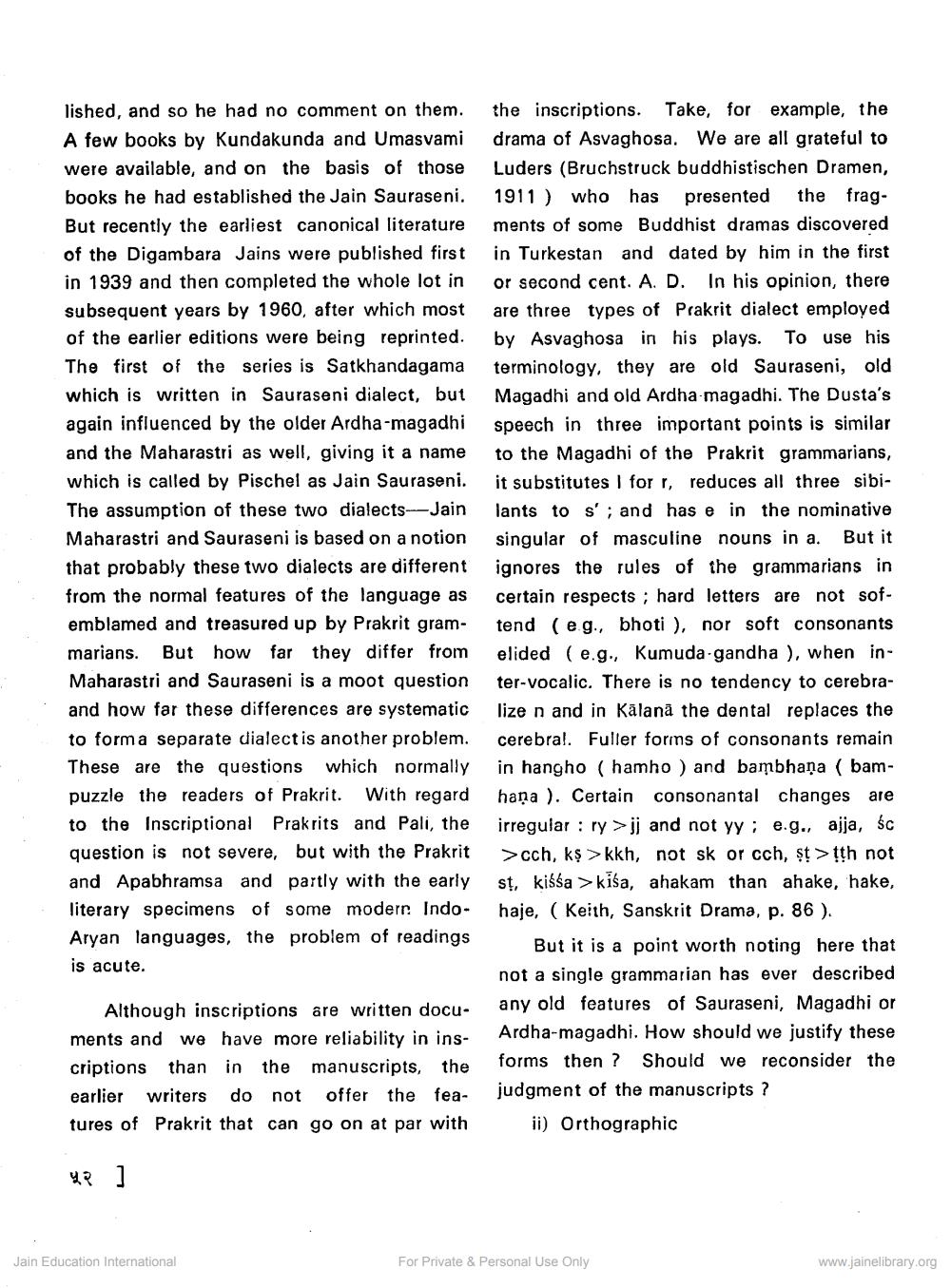________________
lished, and so he had no comment on them. the inscriptions. Take, for example, the A few books by Kundakunda and Umasvami drama of Asvaghosa. We are all grateful to were available, and on the basis of those Luders (Bruchstruck buddhistischen Dramen, books he had established the Jain Sauraseni. 1911 ) who has presented the fragBut recently the earliest canonical literature ments of some Buddhist dramas discovered of the Digambara Jains were published first in Turkestan and dated by him in the first in 1939 and then completed the whole lot in or second cent. A. D. In his opinion, there subsequent years by 1960, after which most are three types of Prakrit dialect employed of the earlier editions were being reprinted. by Asvaghosa in his plays. To use his The first of the series is Satkhandagama terminology, they are old Sauraseni, old which is written in Sauraseni dialect, but Magadhi and old Ardha magadhi. The Dusta's again influenced by the older Ardha-magadhi speech in three important points is similar and the Maharastri as well, giving it a name to the Magadhi of the Prakrit grammarians, which is called by Pischel as Jain Sauraseni. it substitutes I for r, reduces all three sibiThe assumption of these two dialects--Jain lants to s'; and has e in the nominative Maharastri and Sauraseni is based on a notion singular of masculine nouns in a. But it that probably these two dialects are different ignores the rules of the grammarians in from the normal features of the language ascertain respects ; hard letters are not sofemblamed and treasured up by Prakrit gram- tend (eg., bhoti ), nor soft consonants marians. But how far they differ from elided (e.g., Kumuda-gandha ), when inMaharastri and Sauraseni is a moot question ter-vocalic. There is no tendency to cerebraand how far these differences are systematic lize n and in Kälanä the dental replaces the to form a separate dialectis another problem. cerebral. Fuller forms of consonants remain These are the questions which normally in hangho (hamho) and bambhana ( bampuzzle the readers of Prakrit. With regard hana ). Certain consonantal changes are to the Inscriptional Prakrits and Pali, the irregular : ry >jj and not yy ; e.g., ajja, śc question is not severe, but with the Prakrit >cch, ks >kkh, not sk or cch, st>tth not and Apabhramsa and partly with the early sự, kissa > kiša, ahakam than ahake, hake, literary specimens of some modern. Indo- haje, ( Keith, Sanskrit Drama, p. 86 ). Aryan languages, the problem of readings
But it is a point worth noting here that is acute.
not a single grammarian has ever described Although inscriptions are written docu- any old features of Sauraseni, Magadhi or ments and we have more reliability in ins
Ardha-magadhi. How should we justify these criptions than in the manuscripts, the
forms then ? Should we reconsider the earlier writers do not offer the fea- judgment of the manuscripts ? tures of Prakrit that can go on at par with ii) Orthographic
22 ]
Jain Education International
For Private & Personal Use Only
www.jainelibrary.org




